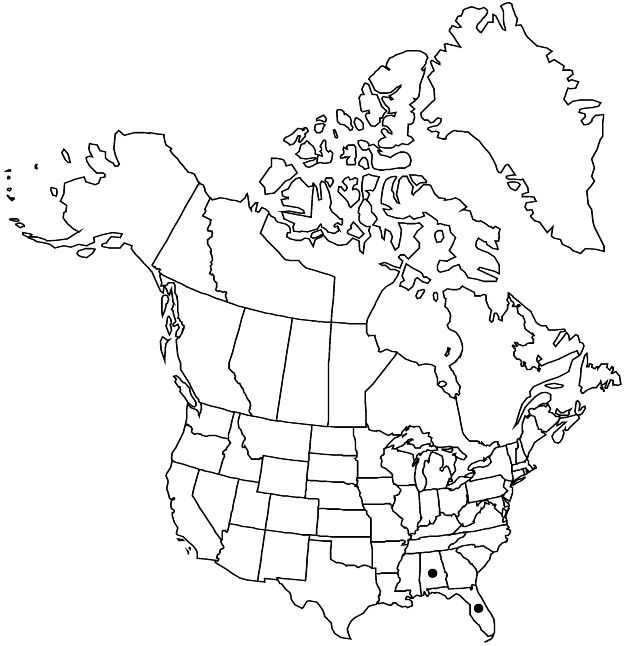Cucumis metuliferus
Ann. Sci. Nat., Bot., sér. 4, 11: 10. 1859.
Plants: rootstock woody. Tendrils glabrate to hispid. Leaves: petiole setose; blade ovate, 3-lobate or weakly palmately 3–5-lobed, (4–)6–12(–14) × (3.5–)5.5–10(–12) cm, length 1.2–1.4 times width, base cordate, lobes elliptic to ovate, margins serrate. Inflorescences: pedicels of pistillate flowers and fruits cylindric; staminate flowers usually 2–5 in fascicles, rarely solitary; pistillate flowers: calyx lobes 2–3 mm, petals 6–10(–17) mm, corolla tube 1–1.6 mm, lobes sparsely puberulent inside. Pepos yellow to yellow-orange, monocolor, cylindric-ellipsoid, 0.6–1.5 × 3–6 cm, surface muricate to aculeate at maturity, spinules thick-based, glabrous, flesh lime green, jellylike. 2n = 24.
Phenology: Flowering Jul–Sep.
Habitat: Fences, disturbed sites
Elevation: 5–200 m
Distribution

Introduced; Ala., Fla., Africa, introduced also in Australia.
Discussion
Cucumis metuliferus has been reported as naturalized in Houston County, Alabama, and Pinellas County, Florida.
Cucumis metuliferus is used for food, for garnish, and for decoration, apparently more for the latter. The flavor has been described as bland citrus, bananalike, banana-lime, a banana-cucumber-lemon combination, and a cucumber-zucchini combination. Its success as a cultivar apparently began only in 1982 in New Zealand from particularly colorful selections. It was exported from there to Japan with the trade name Kiwano and now is grown commercially also in California, Chile, and Australia.
Selected References
None.